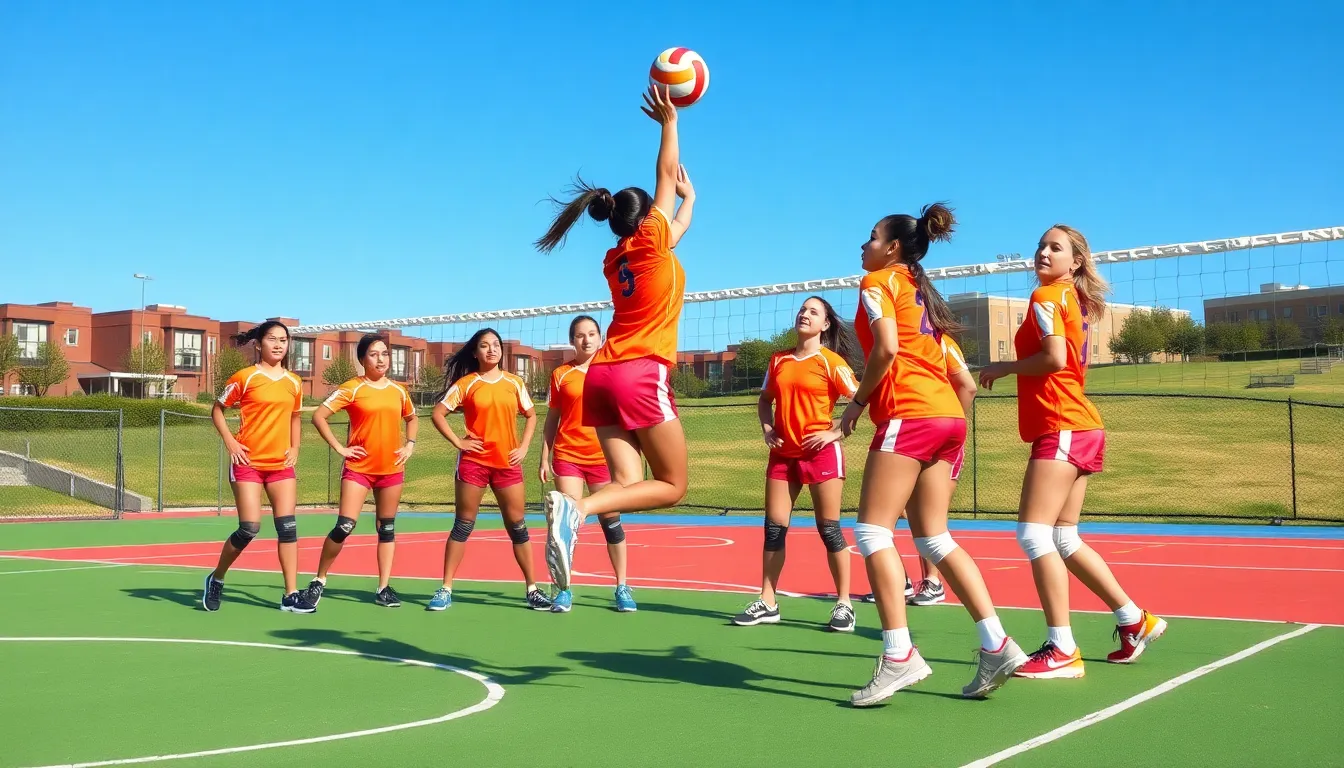High school volleyball season is like that exciting plot twist in a movie that keeps everyone on the edge of their seats. With the sound of sneakers squeaking on the gym floor and the thud of volleyballs flying through the air, it’s a time when students trade their textbooks for spandex and spikes. But when exactly does this thrilling season take off?
Table of Contents
ToggleOverview of High School Volleyball Season
The high school volleyball season typically spans from late summer through early fall. Regular games usually commence in August and continue into October, culminating in postseason tournaments. Each state may have slightly different timelines based on local school district calendars, but the general schedule remains consistent across regions.
Coaches and players often use the weeks leading up to the season for conditioning and practice. Athletic programs encourage team bonding during these early practices, which enhances performance during competitions. Volleyball teams generally engage in rigorous training sessions three to five times a week before games begin.
Regular season matches typically take place on weekdays, allowing teams to compete against other schools within their district. Championship opportunities arise at the end of the season, where teams participate in district and regional playoffs, aiming for a state championship title.
Postseason play often extends into November, with teams vying for recognition at the state level. End-of-season awards and honors recognize individual players’ contributions, fostering growth and interest in the sport.
Overall, the volleyball season provides students a chance to showcase skills, build teamwork, and enjoy excitement and camaraderie during matches. Each player plays a vital role in creating an engaging atmosphere that resonates through school communities.
Typical Start and End Dates

High school volleyball season typically runs from late summer to early fall. The regular season begins in August and wraps up in October, leading into postseason tournaments.
Preseason Preparations
Preseason preparations include practices and conditioning sessions that take place several weeks before matches start. Coaches focus on developing team dynamics, ensuring athletes build a strong foundation in skills. Players strengthen their physical fitness, enhancing their performance for the upcoming season. During this time, teams often engage in friendly scrimmages to gauge their readiness. Emphasis on teamwork and strategy improves overall cohesion among players.
Regular Season Schedule
Regular season matches usually occur on weekdays, creating a vibrant competitive atmosphere. Schools coordinate schedules to maximize participation within district play. Each week often includes multiple matches, leading to opportunities for teams to test their skills against different opponents. October generally marks the final month of regular season games, with championship tournaments on the horizon. Both players and fans eagerly anticipate the excitement of each match leading up to the postseason.
Regional Variations in Season Timing
High school volleyball seasons differ across regions, primarily influenced by climate and school schedules. Understanding these variations helps athletes prepare effectively.
Northern States
In northern states, high school volleyball season typically spans from late August to early November. Schools often schedule practices in the late summer when temperatures are milder. The cooler fall air sets the stage for competitive matches, with championship games concluding before winter sports start. Teams participate in regional tournaments, with many aiming for state championships. Conditioning early in the season focuses on adapting to colder conditions, making teamwork essential as athletes prepare for playoffs.
Southern States
Southern states experience a slightly different high school volleyball timeline, running from mid-July through early October. The warmer climate allows for earlier practice sessions and a longer season. Matches take place in the afternoons and evenings to avoid heat, allowing schools to create a vibrant atmosphere. Many teams compete in various tournaments before districts begin. The postseason often extends into late October, prioritizing preparations for state titles, where athletes showcase their skills under bright autumn skies.
Factors Influencing Season Changes
Various components influence changes in high school volleyball seasons, such as weather conditions and state association regulations.
Weather Considerations
Weather significantly impacts volleyball season scheduling. In northern states, cooler temperatures must be factored in since teams prefer to practice and compete in milder conditions. Late summer offers optimal climate conditions, preventing discomfort for players and fans. On the other hand, southern states experience different weather challenges as the summer heat peaks; thus, evening practices and matches allow for better performances. Rain and storms can also affect match schedules, prompting schools to have contingency plans in place. Therefore, each region adapts accordingly, ensuring that participants enjoy their competitive experiences.
State Associations’ Rules
State associations maintain specific rules that dictate season timing. Regulations often outline exact dates for start and end of the volleyball season to ensure consistency across schools. Some associations may choose to stagger seasons to reduce scheduling conflicts with other sports. Additionally, eligibility requirements, such as age limits and playing dates, directly influence team formations. Compliance with these regulations is crucial for maintaining fair competition and ensuring all teams can equally compete for state titles. Each state’s governing body plays a pivotal role in determining the structure of seasons while catering to their local needs.
High school volleyball season is a thrilling time for students and communities alike. With the excitement of matches and the camaraderie built during practices it transforms the school year into a dynamic experience. Players sharpen their skills while fostering teamwork and sportsmanship.
As the season progresses from late summer to postseason tournaments in November the anticipation builds for both players and fans. Each match serves as a testament to the hard work and dedication put forth by the teams. The unique timing and structure of the season cater to the diverse needs of schools across different regions ensuring that every athlete has the opportunity to shine.





